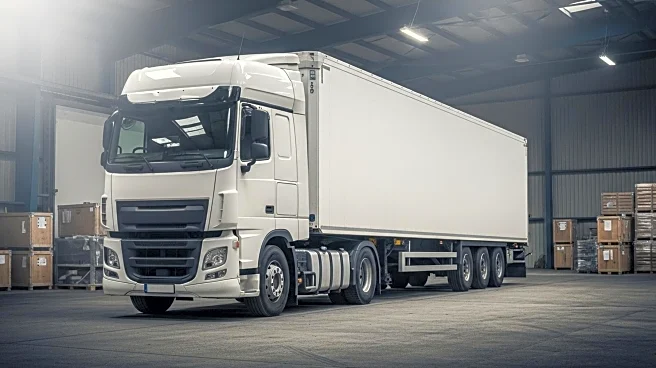What's Happening?
Home Depot and other companies are transforming reverse logistics by leveraging analytics, resale channels, and circular economy practices. At the CSCMP Edge 2025 conference, executives from Home Depot, Liquidity Services, Inc., and DHL shared their approaches to returns, refurbishment, and recycling. Home Depot's Director of Reverse Logistics, Troy Campbell, emphasized the importance of treating reverse flows as value streams. The company's reverse network handles approximately $1.9 billion in COGS returns, with liquidation channels generating $200 million in sales and recycling efforts contributing $3.2 million in revenue annually.
Why It's Important?
The evolution of reverse logistics from a cost burden to a strategic advantage is crucial for supply chain leaders. By integrating reverse and forward networks, companies can enhance efficiency and position circularity as both a cost mitigator and differentiator. This shift is essential in a future where circularity is no longer optional. Firms that succeed will likely be those that treat returns as raw material for competitive advantage, leveraging data to shrink decision windows and layering multiple resale and liquidation strategies.
What's Next?
Supply chain leaders are encouraged to embed reverse logistics as a core discipline, measured rigorously and aligned with broader business transformation. As return volumes and product complexity increase, mature operators will need to leverage data, integrate networks, and position circularity strategically. The focus on circular economy practices will likely continue to grow, with companies exploring new resale channels and secondary market opportunities to handle returned goods efficiently.
Beyond the Headlines
The rise of secondary market channels to handle returned goods is a notable evolution in reverse logistics. Models such as bin stores, livestream auctions, and warehouse pickup options are gaining traction, offering new ways to move bulk items and low-value returns. These channels provide better margins over traditional B2B channels and reduce logistics friction. The integration of circular economy practices not only enhances sustainability but also deepens engagement with end users, potentially reclaiming more margin.










